David Kindersley (1915-1995): A man with a lasting legacy
On his centenary, Victoria King reports on David Kindersley, a letter-carver whose work you will almost certainly have come across, whether you know it or not.
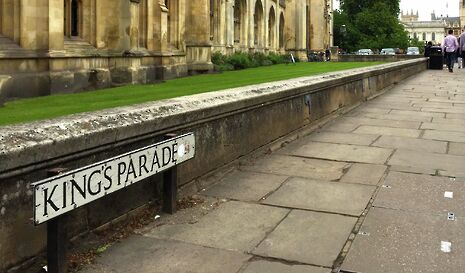
Most of you will likely not have heard the name David Kindersley, yet you will almost certainly have come across his legacy in one form or another. By trade he was a stone letter-carver and designer of typeface, so every time you jaunt past the ‘Kings Parade’ street sign, or the many others in that style, it’s worth sparing a thought for the remarkable man behind it.
Kindersley started out as an apprentice to Eric Gill, creator of ‘Gill Sans’, a typeface still widely used. In 1936 Kindersley broke away to set up his own workshop, still working on commissions for Gill who sadly died four years later, though the influence he left on his former apprentice was to be lasting. In 1945 Kindersley set up his own fully fledged letter-carving workshop in the village of Barton in Cambridgeshire, moving in 1967 to Chesterton Tower in Cambridge, and ten years later to Victoria Road where today his workshop remains fully operative under his widow, Lida Kindersley.
Lida, clearly a highly competent yet refreshingly self-deprecating letter-carver herself, gave a talk on her deceased husband and his meticulous craft one evening at Waterstones. I told a friend about it hoping to tempt her into joining me, at which point she looked unimpressed and inquired “What, so he designed the font for Cambridge street signs?” This would be to greatly diminish his achievements, since his typeface is used not only in Cambridge, but also all over Britain, the Commonwealth and even in the world of Harry Potter. Indeed, for those fans among you, when the first scene opens with a shot of the Privet Drive street sign, we have Kindersley to thank for that quintessentially British lettering.
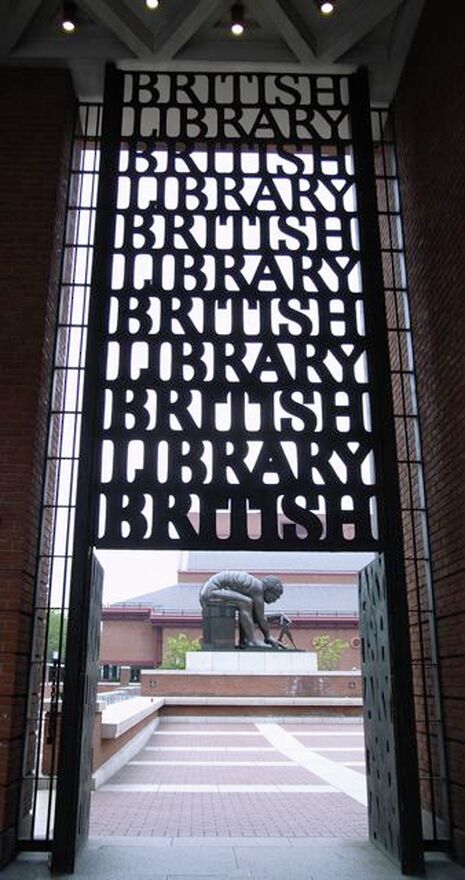
However David Kindersley’s accomplishments are not purely confined to street signs. A particularly illustrious commission for he and Lida was in designing the striking gates of the British Library, transforming letter carving into something that was also to have a functional value. Lida humorously professed her dislike for health and safety laws, which dictated that the bottom of the gates should have gaps no bigger than a strictly specified size, to ensure that children could not trap hands, limbs or heads in them. Whereas they made the top of the gates with much wider gaps to let as much natural light in as possible, although again these could not be too wide otherwise they would cease to serve their purpose as gates. I was amazed by all the practical considerations that went into such an extraordinary artistic endeavour. I was also surprised to be told that the gates of Queens’ College’s porters lodge which I obliviously cycle past everyday, were inspired by the same principle, with the letters ‘Queens College’ wrought out of metal.
It is not only Queens’ College that owes a debt of gratitude to Kindersley. For his centenary there is a walking tour around Cambridge, pointing out his many contributions to the city, many of which are in the colleges. These include the lettering of Corpus Christi’s ‘Taylor Library’; the St Catherine’s coat of arms carved above the entrance to its Woodlark building; the memorial to DNA pioneer Sir Francis Crick in the archway of the Great Gate at Gonville and Caius; the war memorial in Trinity Chapel; and the memorials in St John’s Chapel. Even the renowned Corpus Christi clock has a Latin inscription below it carved by Kindersley, translated into English as ‘the world and its desires will pass away’.
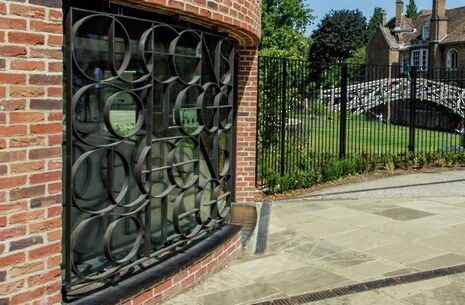
During Lida’s talk, I was in awe of the way that she spoke about letter carving, as if it could not simply be reduced to a physical act of hammer and chisel. She described how David always sought the completion of a kind of spiritual triangle. He regarded the processes of letter carving in terms of being active, passive or neutral, which could be likened to the role of the carver, the stone, and the client. Kindersley’s philosophical nature was reiterated as Lida described how in letter carving, as in life, every letter of the alphabet is doing a job and none is of more value than the other. Thus David strived to shape his letters so that the ‘O’ would not have a greater presence than the ‘i’, and so forth, which struck me as a pretty solid analogy of the foundation of democracy.
Kindersley’s spiritual and philosophical outlook culminated perfectly in his book ‘Graphic Sayings’ published in 1971, which exhibited a collection of profound sayings and proverbs that he had illustrated. In the opening of his book, Kindersley credits the sayings to Idries Shah, who was an author and teacher of the Islamic Sufi tradition. When I asked Lida about it she explained how Kindersley himself had been very interested in Sufism. Several of the works from ‘Graphic Sayings’ were displayed in Waterstones, one of which made a particular impression. It read ‘Whoever seeks his own welfare does not taste full success. As the timid fearing the hangover cannot have the delights of tipsiness’. This struck me as incredibly apt for life at Cambridge in that we are so preoccupied with succeeding in the future, whether it be getting that essay in or applying for that internship, that we rarely stop to actually enjoy our time here. Another of Shah’s sayings, which has been carved into slate and displayed at the reception of Addenbrookes Hospital, in memory of Kindersley, stoically reads: ‘it will pass whatever it is’.
The numerous contributions that Kindersley has made both to Cambridge, and to the nation as a whole, go unacknowledged by the majority of us. In her talk Lida summed it up perfectly when she describes her former husband’s work as “not trying to shout, ‘look at me’”. Rather it endeavours to preserve a fragment of the present for posterity, so that in three thousand years people will know what was here.
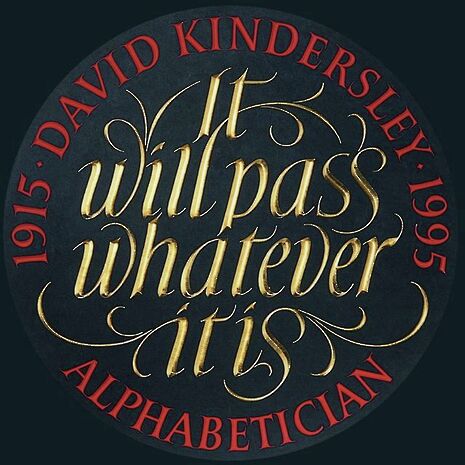
The exhibition of Kindersley’s work will run at the Fitzwilliam until June 14th
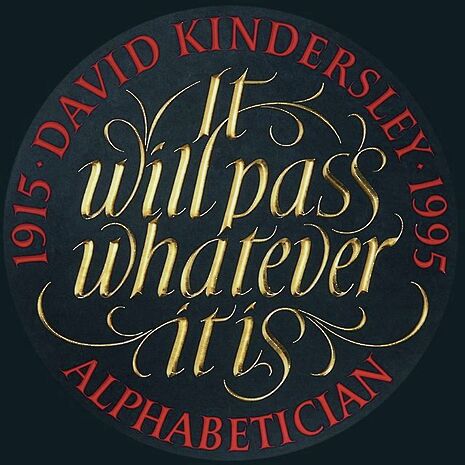
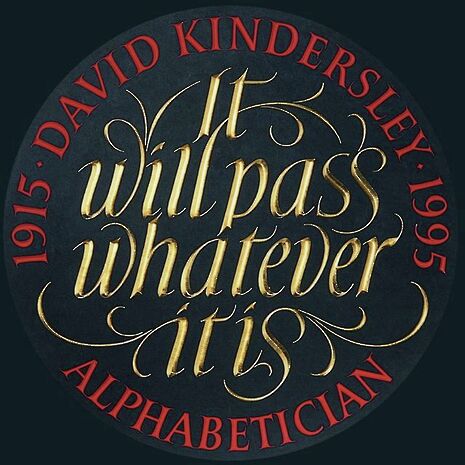
 News / SU stops offering student discounts8 January 2026
News / SU stops offering student discounts8 January 2026 News / Uni-linked firms rank among Cambridgeshire’s largest7 January 2026
News / Uni-linked firms rank among Cambridgeshire’s largest7 January 2026 Comment / Plastic pubs: the problem with Cambridge alehouses 5 January 2026
Comment / Plastic pubs: the problem with Cambridge alehouses 5 January 2026 News / New movement ‘Cambridge is Chopped’ launched to fight against hate crime7 January 2026
News / New movement ‘Cambridge is Chopped’ launched to fight against hate crime7 January 2026 Comment / What happened to men at Cambridge?31 December 2025
Comment / What happened to men at Cambridge?31 December 2025








